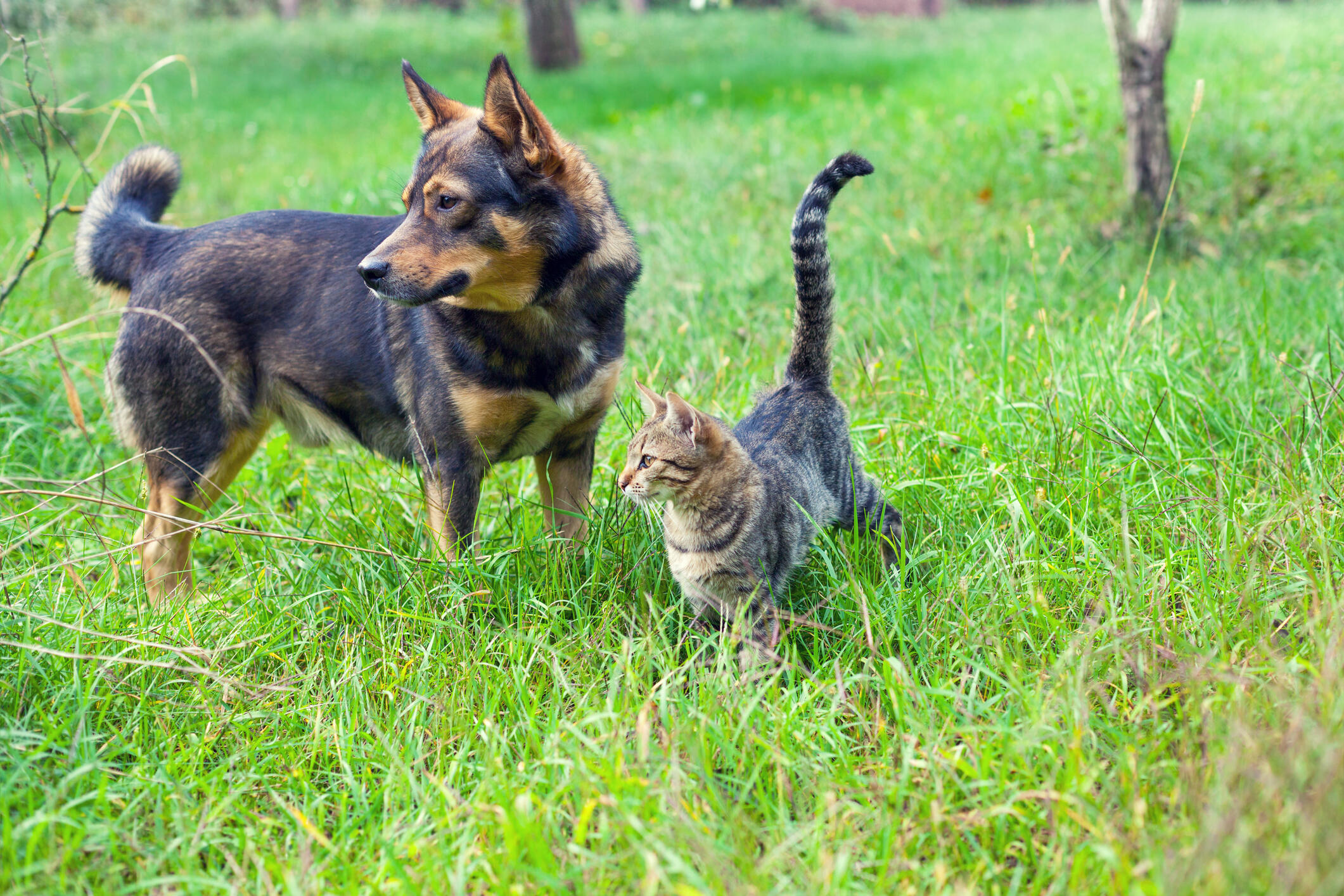
Researchers at LSTM have been involved in a collaborative study with colleagues in Italy and Liverpool to discover if cats and dogs are susceptible to COVID-19, finding that, of those sampled, a small proportion of pets have neutralizing antibodies to the virus.
Working with veterinary and virology specialists at the University of Liverpool and the Universities of Bari and Milan in Italy, LSTM’s Drs Ian Patterson and Grant Hughes developed the tests, using SARS-CoV-2, the causative agent of COVID-19, to test the samples collected during visits to vets in Northern Italy of over 900 pets.
The results of the study have been published in Nature Communications . A pilot project based on smaller numbers of samples was released earlier this year on BioRxiv.
While no animals tested PCR positive for the virus itself, 3.3% of dogs and 5.8% of cats had measurable SARS-CoV-2 neutralizing antibodies, with dogs from COVID-19 positive households being significantly more likely to test positive than those from COVID-19 negative households.
LSTM’s Dr Ian Patterson, responsible for performing the serological assays in this study, said: "The assay we have used is considered the gold standard of antibody assays, measuring the ability of sera from these animals to neutralise an isolate of SARS-CoV-2 produced in the laboratory. The levels of antibody found were surprising and suggest we need to continue such studies looking at animals in the future. It was particularly interesting to see that the presence of antibodies in dogs, but not cats, were linked to the household COVID-19 status, perhaps suggesting the interactions between owners and dogs under natural conditions of pet ownership may make them more susceptible."
Professor Nicola Decaro from the University of Bari is a world-renowned veterinary virologist with over 50 papers on coronaviruses of animals. He said: "Understanding the role of pet animals in this pandemic is very challenging at a time when clearly the research and medical focus has to be on human health. This is the largest study of its type to date, undertaken in regions of Italy where human infection was high, and would not have been possible without the support of veterinary diagnostic laboratories, local practitioners, and an International collaboration involving researchers in Bari, Milan and Liverpool. Our results clearly suggest pet animals can be infected only sporadically, thus likely not representing a source of infection for human beings. The priority has to remain on humans, but it will be important to better understand the role of animals if we are to fully control this pandemic."
Professor Alan Radford who helps run a national surveillance network at University of Liverpool says: " Whilst none of the tested animals were shedding virus at the time of sampling, vets and the public need to continue to be aware that pet animals living in COVID-19 households may have virus on them, and our research adds to the evidence suggesting they may also be infected. We must keep this in context though. Shedding of virus in our study was not detected, and there is no evidence for pet animals transmitting this virus to people. Whilst a relatively small number of people have become infected by animals, mostly associated with farmed mink, the overwhelming majority of people that are infected will get SARS-CoV-2 from other people they contact, and this is why following local guidelines on social distancing and hygiene remain critical.
The authors call for further work to be carried out to better understand the implications for pets, particularly those in COVID-19 households, and advocate for pet animals to be included in population studies. “We must not detract from vital human research”, says Alan Radford, “but when disease in the human population is further reduced and human contact tracing is accessible, we may need to know our furry friends aren’t helping even in a small way to maintain SARS-CoV-2 in the population.”
Patterson, E.I., Elia, G., Grassi, A. et al. Evidence of exposure to SARS-CoV-2 in cats and dogs from households in Italy. Nat Commun 11, 6231 (2020). https://doi.org/10.1038/s41467-020-20097-0